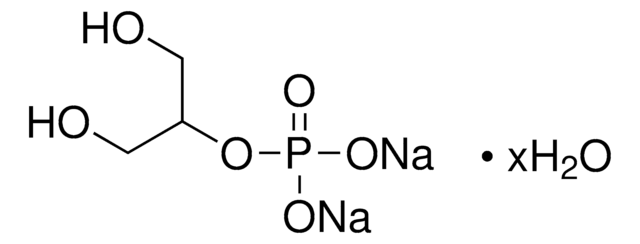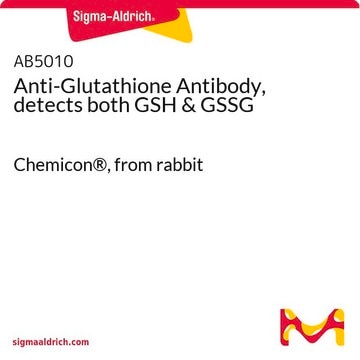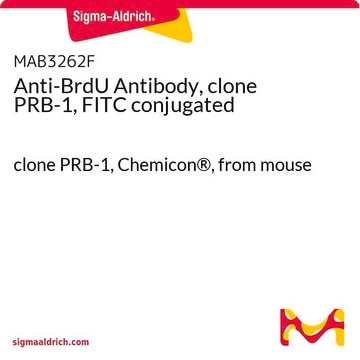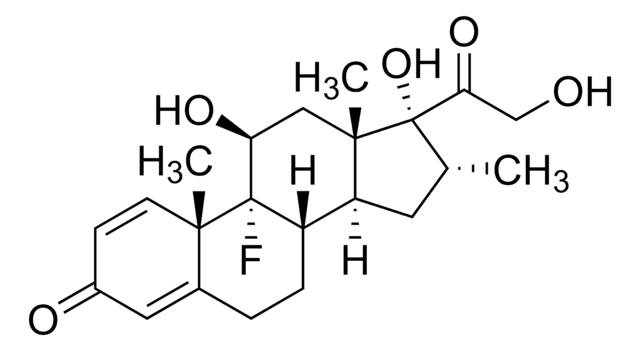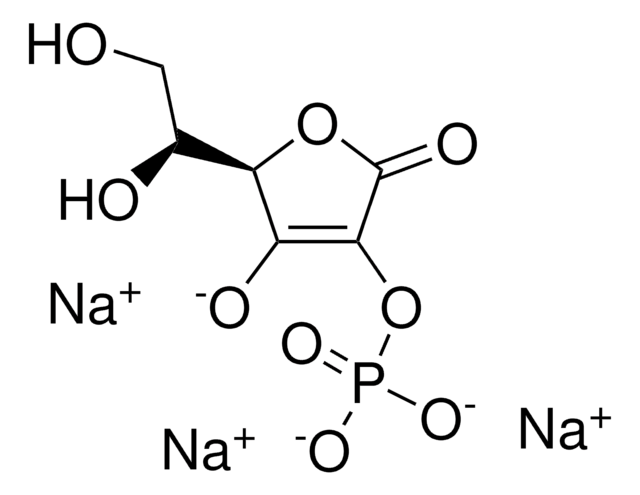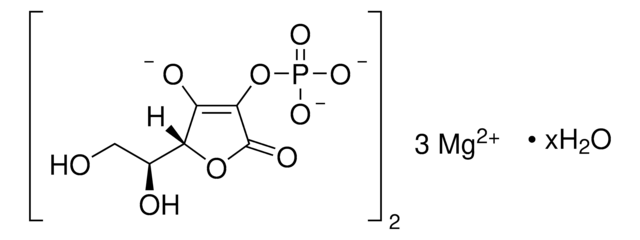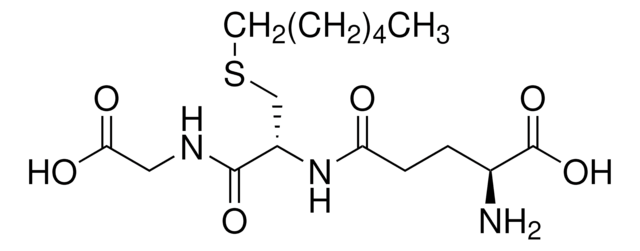MAB3194
Anti-Glutathione: N-ethylmaleimide adduct Antibody, clone 8.1GSH
clone 8.1GSH, Chemicon®, from mouse
About This Item
Recommended Products
biological source
mouse
Quality Level
antibody form
purified antibody
antibody product type
primary antibodies
clone
8.1GSH, monoclonal
species reactivity (predicted by homology)
mammals
manufacturer/tradename
Chemicon®
technique(s)
ELISA: suitable
flow cytometry: suitable
immunocytochemistry: suitable
immunohistochemistry: suitable
western blot: suitable
isotype
IgG1
shipped in
wet ice
target post-translational modification
unmodified
Related Categories
Specificity
Immunogen
Application
Immunocytochemistry: 1:100 - 1:500 for assessment of intracellular GSH distribution.
ELISA: 1:100,000 - 1:200,000 to quantify GSH at >2 mM in biological specimens.
Flow cytometry: 1:100 - 1:1,000
Cells were fixed with cold 1% PFA for 5 min and vortexed into methanol (-20°C) containing 5mM NEM (10 min on dry ice) or 10 μM NEM (N-ethyl maleimide) for 30 min at RT.
Optimal working dilutions must be determined by end user.
Positive Control: Peripheral blood mononuclear cells (PBMC) treated with NEM
Neuroscience
Oxidative Stress
Physical form
Storage and Stability
Other Notes
Legal Information
Disclaimer
Not finding the right product?
Try our Product Selector Tool.
wgk_germany
WGK 2
flash_point_f
Not applicable
flash_point_c
Not applicable
Certificates of Analysis (COA)
Search for Certificates of Analysis (COA) by entering the products Lot/Batch Number. Lot and Batch Numbers can be found on a product’s label following the words ‘Lot’ or ‘Batch’.
Already Own This Product?
Find documentation for the products that you have recently purchased in the Document Library.
Our team of scientists has experience in all areas of research including Life Science, Material Science, Chemical Synthesis, Chromatography, Analytical and many others.
Contact Technical Service